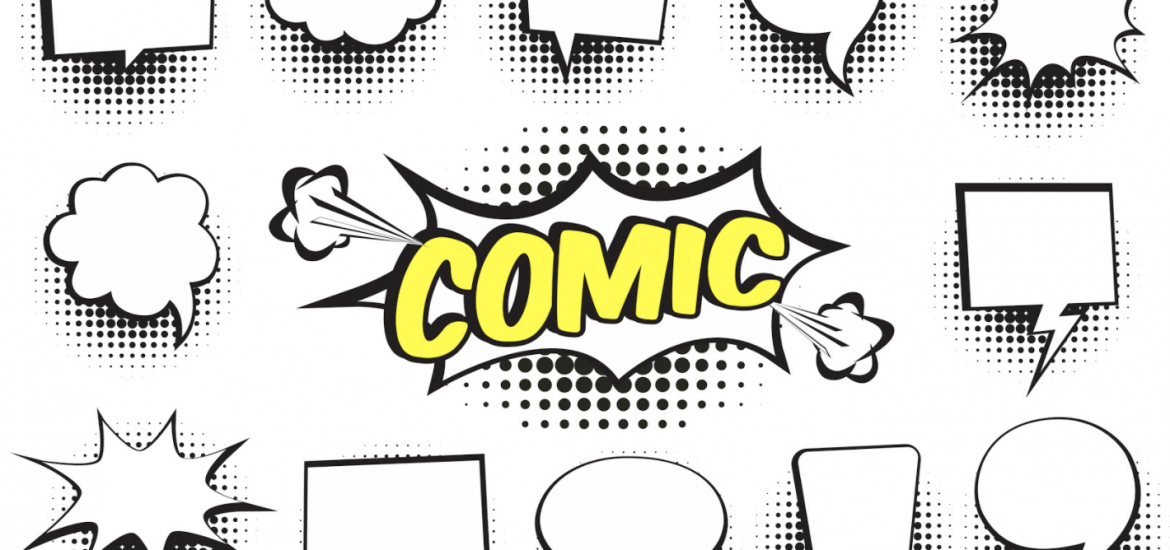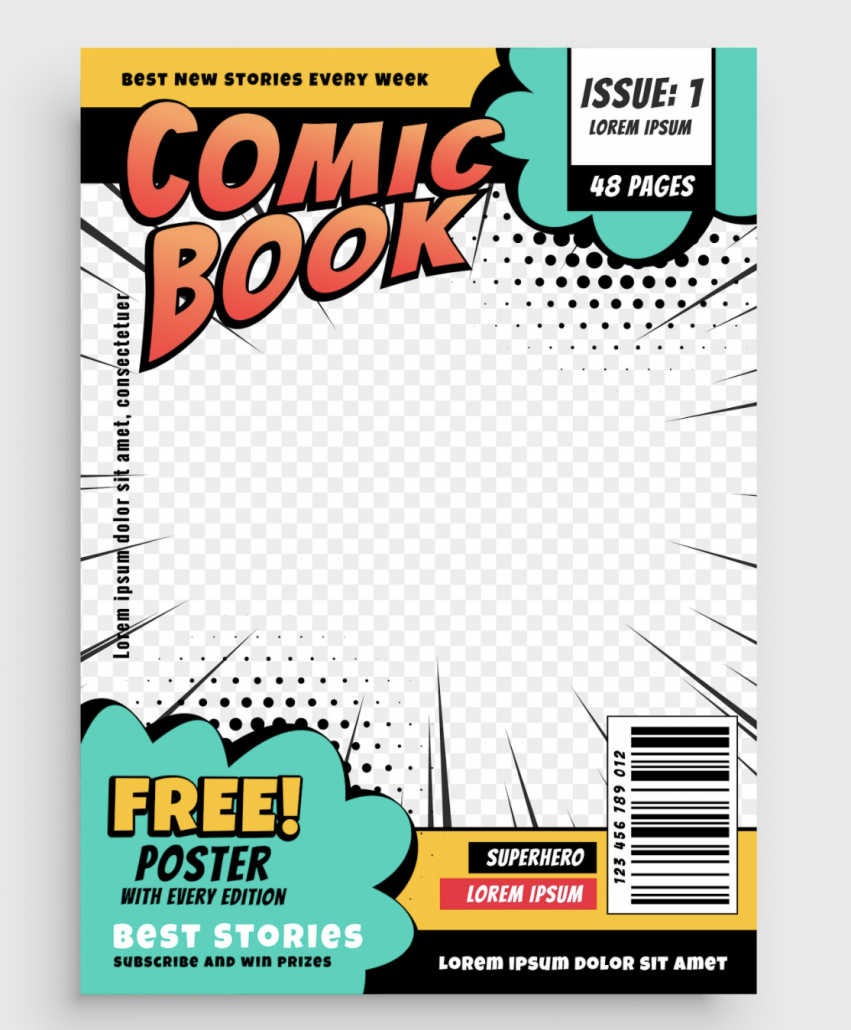Drafting and creating a comic book can be more tiresome and time-consuming than you ever thought, but it feels good when you finally come up with a beautifully printed comic book in your hand. Whether you’re an aspiring artist who’s trying to penetrate the comic book industry or you’ve been a comic guru for years already, with proper techniques and the right software, you can create your own beautiful comic book series.
Before going into the most profound ideas of creating an excellent comic book, you must first understand the comics basics. Such basics include the meaning and key elements of a comic book.
What Is A Comic Book?
A comic book is a medium used by an artist to express an idea or tell a story. It’s a visual representation presented sequentially in panels of images coupled with textual elements. Text devices such as captions, onomatopoeia, and speech balloons can indicate sound effects, narration, or dialogue of characters.
Requisite Of A Good Comic Book
Unlike other mediums such as films, comic books are purely visual, which implies that their narration must be well planned and calculated before any element is put on the paper. If you’re unsure about where to start, you can reach out to a trusted graphic novel maker to guide you, but here are some of the comic book key elements that you need to understand first.
- Consistent narration
The narrative is the key feature of a fantastic literature. Narration is the act of telling a story or an idea to the readers in the perspective of the narrator. Consistent narration helps the readers to understand the sequence of events in the story by walking them through every page in an objective manner.
You can ensure the consistency of your story by using recognizable characters and repetitive speech patterns. The use of figurative language and literary devices such as allusion, cliffhanger, foreshadowing, and humor can also enhance a narrative’s consistency.
- Command of pacing
Pacing is the rate or duration which the reader takes in reading your story. Pacing is determined by emotional resonance, visual layout, nature, and density of your words. Apart from setting and sticking to your rhythm, a good comic book requires you to make the story more interesting in a way that a reader won’t be able to let go of it until such time it’s finished.
Step-By-Step Guide To Creating Your Own Comic Book Series
Creating a comic book series requires a high level of skills such as creativity, imagination, artistry, and interpersonal skills. It involves creating a reality through the art of imagination and storytelling, which can make you feel good, once you see all your ideas come together at the end of the project. With that, where do you start?
Follow these steps to bring your comic book series project to life:
- Research The Art of Making Good Comics
Sometimes, because of your passion, you may feel as if you’re fully capable and you have enough experience in creating comics. But there’s always a lot to learn from more experienced artists. Before you start creating your comic, read some materials written by your favorite comic book artists to discover some their techniques.
You can also do some research in your library. Have a thought on what drives you to a particular comic series. Study its technical and creative aspects, then draw inspiration from it in developing and improving your writing skills and style.
- Come Up With An Idea You Believe In
With a lot of online and print content created every day, as a comic book author, your creativity is what will set you apart from the rest. Come up with an idea you believe in and hold onto it. Creating a comic book will require your commitment and dedication to that idea until you see your project through to the end.
When coming up with an idea, think of something that will work well with your visual ideas. Secondly, draft an outline of your concept. You might also want to draw a storyboard to help you visualize everything more clearly. Think about the introduction, the significant events, the climax, the denouement, and even the conclusion of your story.
Next, create brief personal profiles of the main characters. What’re their names? Where do they feature in your book? What are their strengths and weaknesses? Also, remember to associate intense emotions and attributes with their characters, such as evil, love, death, good, bad, joy, anger, etc. These emotions will give life to your characters and their roles in your story.
- Draw The Illustrations
The step one and two discussed above are involved in the pre-planning stage, but the third step is about drawing the illustrations—perhaps the most crucial moment you’ve been waiting for! Illustrating the scenes will be unique depending on whether you use manual drawing or digital, as well as on the mediums you decide to utilize, such as inks, pencils, paint, drawing software or other online sketching apps. Before you begin drawing, always start with a plan which will help you decide which medium is perfect to use, or what elements you’d need to include in each page and scene.
- Choose A Format
Generally, the format you use will contribute to the overall reading experience of the reader. There are many classic comic formats to choose from. Your format of choice will depend on your budget and your overall goal, but at the end of it all, you can choose the format that pleases you both as a creator and a reader.
Print for instance is the perfect comic format if your goal is to print your book and distribute hard copies. On the other hand, if you want to publish your book online, you can consider e-book formats such as EPUB, PDF, TXT, or MOBI.
- Lettering
Lettering is vital when it comes to comic work. You may have an interesting story and great drawings, but if your lettering isn’t impressing and understandable, people won’t read your story. Good lettering is one of the surefire ways to win the attention of your potential readers.
- Publish Your Work
After a lot of sacrifice and dedication, it’s time to release your work into the world! You can now produce a few copies and share them with your friends and relatives. Host a launch event and sell your creative work to people who are interested in your comic books. You might also want to market in online, so you could reach out to a wider audience, especially on social media.
Final Word
Whether you’re yet to start or finish your comic books series, be sure you’re approaching your comic book project as a comic creator and not as a novel writer. Both can be similar in some aspects but are very distinct in format and way of storytelling. Once you’re able to establish the unique features of your comic book series in terms of content, design, and narrative, you’ll be successful in releasing your very own comic book series!
Now that you’ve learnt how to create one, the power is in your hands!



